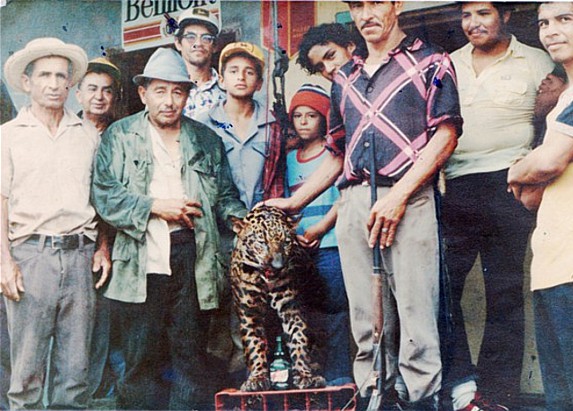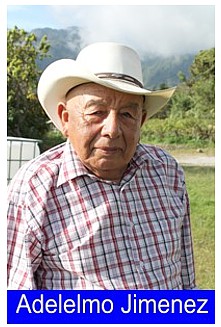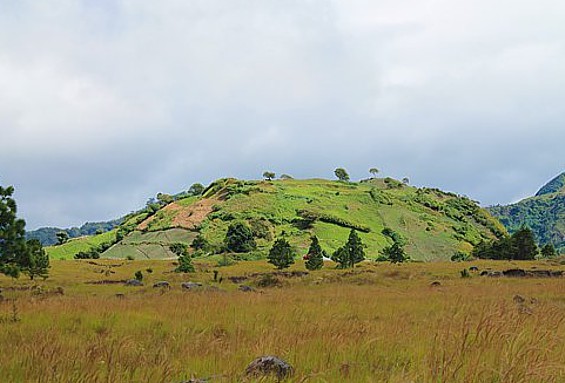Last Tiger in Panama?

Pictured above in 1981, is local onion grower, Adelelmo Jimenez, next to Volcan's (Paso Ancho) last known tiger.
PANAMA'S LAST TIGER?
By David Dell
It is sad the stories you uncover as you dig into the history of an area. I was working with fellow journalist, Ivan Flores, on an article about the mystery lights of Mata de Pava. Our main interviewee was local onion grower, Adelelmo Jimenez. In writing the story he did mention that the area was almost plagued with tigers at one point. So much so that walking alone at night through the narrow Paso Ancho pass was dangerous as the "Tigers" could attack and kill you.
A PICTURE PAINTS A THOUSAND SAD WORDS.
As Ivan and I were leaving after our interview, Adelmo hurried after me and handed me a a small photograph. I stared at the slightly faded colour picture for several minutes as the full significance of what I had been given came to my mind.
I must admit I was skeptical about these tiger stories, believing they referred to the small "Margay" tigers which I had seen in Nicaragua.
These Nicaraguan Margay tigers were little more than ferocious domestic cats and certainly no larger. The tigers that used to roam here in the mountains of Chiriqui were certainly no pussy cats- they were killers. The unfortunate animal pictured above had just killed a farmers cow and was a clear danger to humans and particularly to small children. Sadly he had to be hunted down and killed.

The mountains around Volcan used to teem with wildlife; deer, rabbits, wild turkeys and of course tigers. What was the cause of the ecological decline? Hunting certainly was a cause, although to be honest the people here hunt for need - not for greed or idle pleasure. The biggest single factor may have been the rampant deforestation that took place, most recently, in the 1960's. Areas that today are vegetable growing fields, 50 years ago were prime forests. Loss of protective habitat meant the animals had to move further into the mountain jungle - or die.
DEFORESTATION FOR THE PANAMA RAILWAY.
Progress and development always comes with a price. In the mid 1800's work started on the Panama Isthmus railway. This meant that millions of railway ties had to be found. The hardest and most durable wood that was easily available came from the Bambito trees of Chiriqui.

Pictured above is the mysterious Mata De Pava hill. Look closely however at the foreground in this picture. The hill itself is lush and productive, unfortunately the arid volcanic soil in the foreground only allows wild bush grass to grow. 50 years ago the hill above was dense forest and a habitat for wildlife, including of course our mountain tigers. Necessity meant that as the hill provided the only arable land in the area it had to be utilized -deforested.
The deforestation in the surrounding Cerro Punta/Shangri-La Valley area caused a marked rise in local temperatures. One anecdotal piece of information I received from friends who lived in the area was that in the late 1960's if you put a bowl of water out for a dog at night - in the morning it would be covered with a thin film of ice (32o Fahrenheit). Today the average temps in this area are around 62o F. - A rise of 30 degrees.
A sad reality but people do have to eat. They do have to feel that their children and animals can safely walk the countryside without fear of attack from wild animals- but, where do we draw the line?
David Dell
chiriquivillage@gmail.com